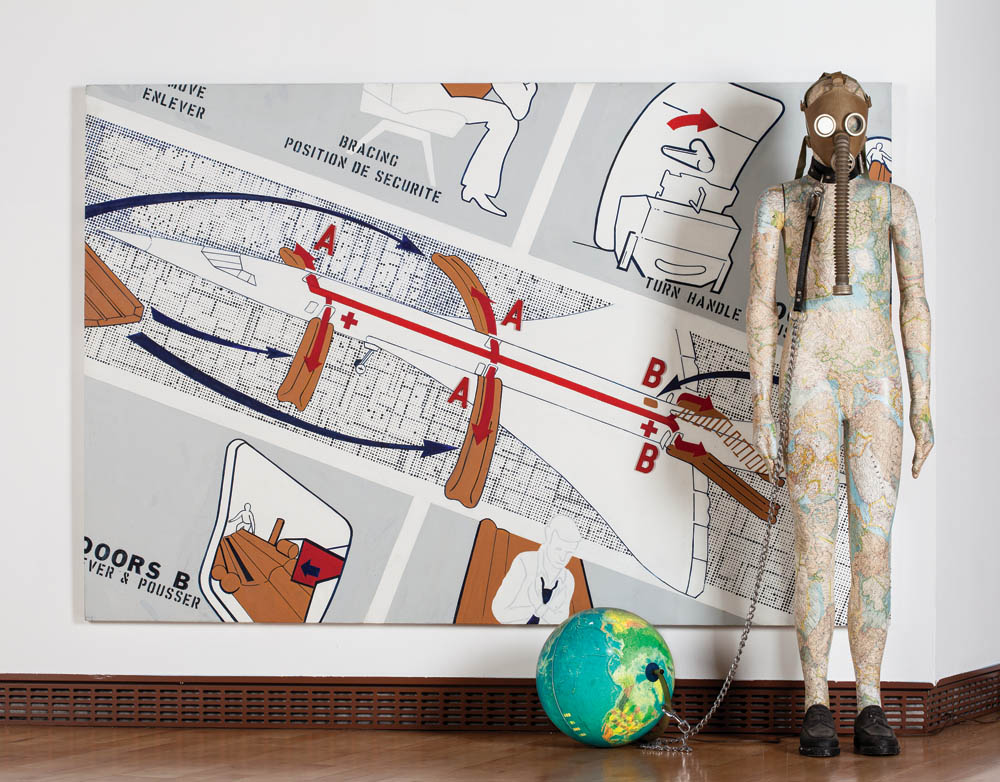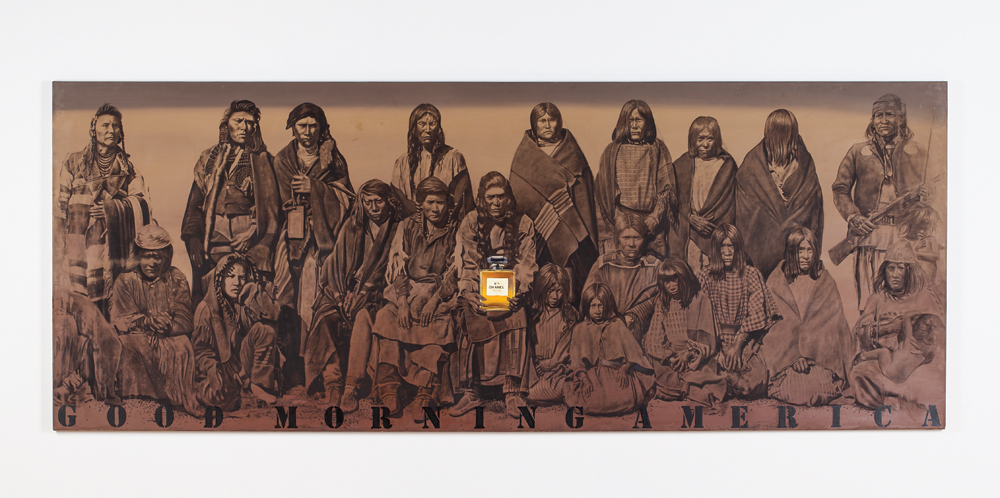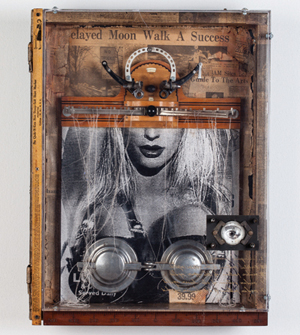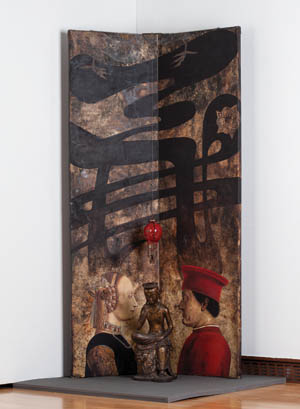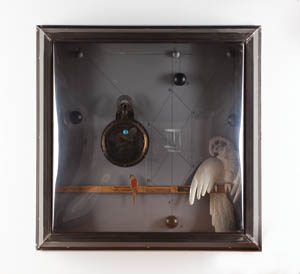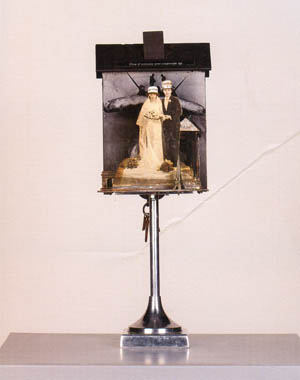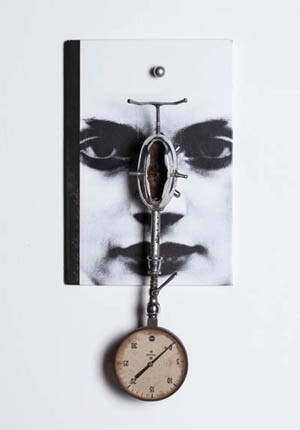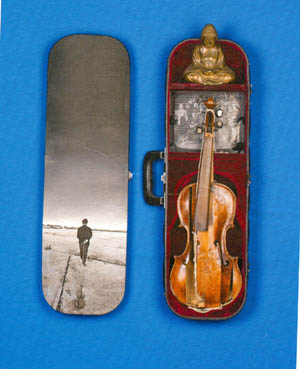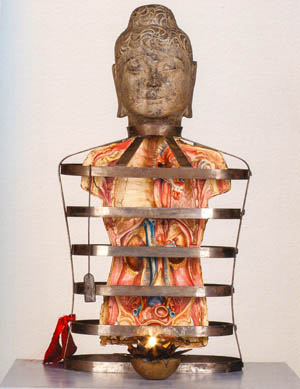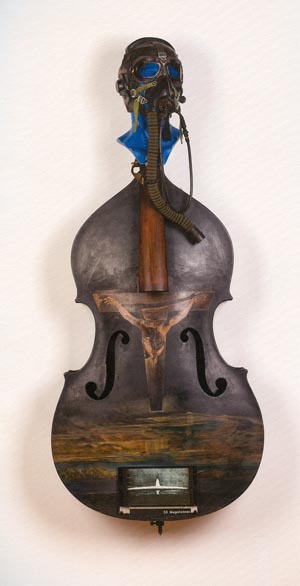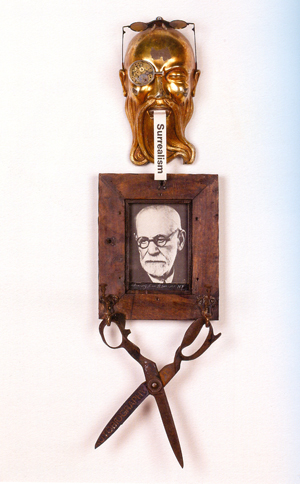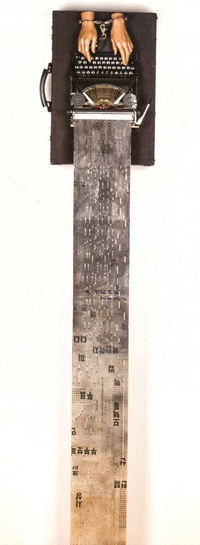과거전시 Past exhibition

변종곤-조우(Encounter)
- 전시기간 2014-10-08 ~ 2015-01-04
- 전시장소 2 전시실
- 전시작품 회화 및 오브제 150여점
- 참여작가 변종곤
변종곤 작가는 예술가로서 창조적 에너지가 가장 강하다고 할 수 있는 30대 초반을 정치적으로 혼란스러웠던 1970년대와 80년대 초 대구에서 보냈다. 당시는 유신과 군사독재의 지속으로 암울한 정치적 상황에 놓여 있었고, 예술은 그 시대의 정치적 상황과 자유의 구속에 대해 다양한 방식으로 반응해왔다. 통제시스템이 작동하는 권위주의적 사회에서의 정치적 억압은 역으로 모든 것을 정치적으로 사유하게 하는 경향을 낳을 수 있다. 변종곤의 작품
변종곤 작가는 1978년 철수한 미 공군 기지를 폐허의 풍경처럼 사실적으로 그린 작품으로 제1회 동아미술대전 대상을 받으면서 유명해졌지만, 이후 창작의 자유를 보장받지 못했다. 그리고 그 자신이 밝힌 바대로 군사정권에 의해 억압된 예술적 자유를 위해 그는 1981년 뉴욕으로 이주했다. 그곳에서 버려진 물건과 극사실주의 기법을 활용하여 제작한 독특하고 풍자적인 작품으로 새롭게 작업을 시작한 그는 이후 오브제들(바이올린, 조각상, 오래된 TV, 마네킨, 인형, 기계, 포스터, 불상, 책, 시계 등)을 발견하거나 구입하여 절충적으로 제작한 작품으로 뉴욕화단에 알려지게 되었다.
오브제들을 사용하는 문제와 관련해 변종곤은 다음과 같은 철학을 가지고 있다. “어떤 물건을 일상적인 용도에서 벗어나게 하면 보는 이로 하여금 잠재된 욕망이나 환상을 불러일으키게 하고 이는 진부한 것들에 대한 새로움의 시작이다.” 그의 말을 통해 질문을 해보자. 예술로 들어온 물건들, 즉 오브제는 우리에게 어떤 의미로 다가오는 것일까?
‘낯설게 하기’의 효과, 이를테면 하나의 사물이 일상적 맥락에서 떨어져 나와 엉뚱한 곳에 배치될 때, 우리가 친숙하게 여겨 그냥 지나쳤던 그 대상은 낯선 것으로 다가오면서 일상적 현실이 아닌 의식되지 않았던 또 하나의 현실을 드러내게 된다. 진부하게 여겨지던 물건이 새로운 상상력을 불러일으키게 하고 우리의 고정된 사고를 교란시킨다. 그러한 의미에서 일상적인 물건이 비판성을 담지하게 된다. 우리는 서로 이질적인 것을 결합시켜서 새로운 에너지를 창조하는 것으로부터 여느 작품과는 다른 예술적 경험을 하게 된다. 변종곤의 오브제들은 예술이 아니면 만날 수 없는 것들로, 본래 예술과는 전혀 무관하게 제작되어진 물건이 예술 작품에 사용됨으로써 예술과 현실을 연결시키는 고리로 작용하게 되는 것이다.
두 개의 전혀 이질적인 것 사이에 인과적인 것을 제시함으로써 예술가들은 폐기물을 예술과 접목시켜 이들에게 비판적 기능을 부여해주는 것이다. 그래서 변종곤의 오브제들은 서로 이질적인 것들의 조우(동질적인 것들의 조우가 아니라)를 통한 제 3의 의미 생성을 가져오는 것이 매력적이다. 변종곤의 작품에서 때로는 익살스럽게, 때로는 신중하게 조우하는 오브제 하나하나에 주의 깊게 들여다보면 뜻밖의 어떤 것과 조우하는 경험을 하게 되지 않을까.
Jong Gon Byun spent his early career in Daegu which was in political chaos during 1970s and early 1980s, specifically his early 30s when most artists would have their strongest creative energies. That period of time was fraught with dismal political situations due to Yushin, the Revitalizing Reform and the duration of military dictatorship, and art responded to the political situations and the restraints of freedom in diverse ways. Political oppressions in an authoritarian society where a controlling system works effectively may conversely bring about a tendency of politicizing everything, say, thinking everything politically. Hands wearing handcuffs could barely move to make up letters they wanted despite their confinement, as seen in
Jong Gon Byun has grown famous since he received the Grand Prise at the First Donga Art Contests in 1978 with the artwork that realistically depicted a US military base in Korea as a landscape of ruins, but felt soon that he did not get his creative freedom. And, as he confessed, the artist left for New York in 1981 for the sake of artistic freedom which was oppressed under the military regime. He started developing a new style as he produced peculiar and satirical artworks in his strategic combination of abandoned things there and hyperrealistic technique, and thereby became known in New York's art circle as he further made pieces by eclestically using such objects as violins, sculptures, old TV sets, mannequins, dolls, machines, posters, statues of Buddha, books, watches, etc. that he found and bought.
When it comes to using objects, the artist has had his own philosophy as the following: "When certain things deviate from their ordinary usages, they may lead viewers to awaken their latent desires and fantasies, which is just the beginning of something new in banal things". We may raise a question based on this statement. How can we make of such things or objects entering into the artworld?
'The effect of making things unfamiliar', for example, when a thing departs from its everyday context and situates itself in a strange place, the thing we passed by as we regarded it as something familiar came to us as something unfamiliar, which reveals another reality yet to be captured in our consciousness other than an ordinary reality. Such a thing that we took trite came to invoke new imaginations and to disturb our fixed ways of thinking. In that sense, ordinary things get to contain criticality. We may have new artistic experiences from the artist's creation of new energies by putting together heterogeneous things, which are different from those experiences from ordinary artworks. Jong Gon Byun's objects are those that we cannot meet other than in art, and things that were produced in no relation to art have come to play a role in the linking of art and reality as they have been used in artworks.
Artists bring wastes and art into combination by putting forward causal relations between two disparate things and thereby bestow critical functions on them. Thus, Jong Gon Byun's objects amazingly gear up for the generating of things' third meanings through encounters between heterogeneous (not homogeneous) things. Shall we not get to encounter something unexpected if we carefully look into each of those objects that meet with each other sometimes humorously, and sometimes seriously in the artist's works?
작품 더 보기
-
X
작품명: Concorde Evacuation
작가명: 변종곤
재료: Oil on Wood Board
사이즈: 144 × 180 × 43cm
제작년도: 2011
-
X
작품명: Good Morning Americ
작가명: 변종곤
재료: Oil on Canva
사이즈: 122 × 320cm
제작년도: 2006
-
X
작품명: Untitled
작가명: 변종곤
재료: Mixed Media
사이즈: 66 × 56 × 12.7cm
제작년도: 2004
-
X
작품명: The Silence of Renaissance,
작가명: 변종곤
재료: Oil on Hand Paper Screen
사이즈: 114 × 96 × 40cm
제작년도: 1993
-
X
작품명: FBAI
작가명: 변종곤
재료: Drawing on Wood Pane
사이즈: 81.2 × 81.2 × 10.2cm
제작년도: 2003
-
X
작품명: CAS61123
작가명: 변종곤
재료: Mixed media
사이즈: 62x21x13cm
제작년도: 2012
-
X
작품명: Woman & Man,
작가명: 변종곤
재료: Mixed Media
사이즈: 60 × 28cm
제작년도: 2010
-
X
작품명: Nam June Paik
작가명: 변종곤
재료: Oil on violin case(Mixed media)
사이즈: 81x28x8cm
제작년도: 2009
-
X
작품명: Buddha
작가명: 변종곤
재료: Mixed media
사이즈: 78x43x30cm
제작년도: 1999
-
X
작품명: 50Megatonnen
작가명: 변종곤
재료: Oil on contrabass
사이즈: 160x67x30cm
제작년도: 2013
-
X
작품명: Freud Auto biograghy
작가명: 변종곤
재료: Mixed media
사이즈: 55.8x23x15.2cm
제작년도: 2006
-
X
작품명: Memory Spam
작가명: 변종곤
재료: Mixed media
사이즈: 210x47x27cm
제작년도: 2013
-
X
작품명: installation view
작가명: 변종곤
재료:
사이즈:
제작년도:



